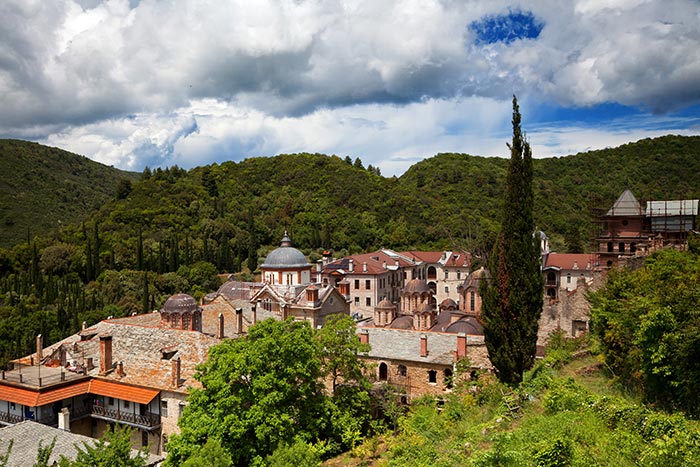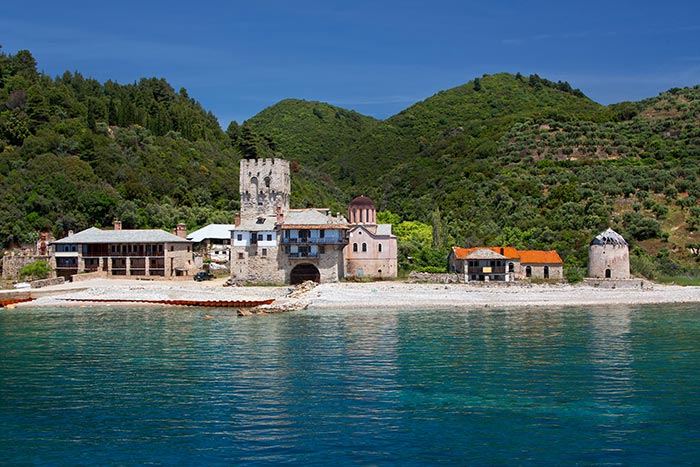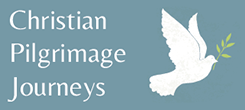
Holy Monastery of Zografou
The earliest written evidence of the monastery's existence dates from 980. According to tradition the monastery was founded by three brothers who could not agree on the name for the monastery. They left in the church a piece of wood. When they came back in the church, they have found painted on the wood a beautiful iconography of Saint George. Excited they called the monastery in the name of unknown painter, in Greek zografos. Today it is traditionally inhabited by Bulgarian Orthodox monks.
During the Middle Ages, the monastery was generously supported by the Bulgarian rulers, such as Ivan Asen II and Ivan Alexander, since it was a matter of pride for the Bulgarian Orthodox Church to maintain a monastery on Athos. The Zografos Monastery has also received land endowments by Byzantine (the first donor being Leo VI the Wise) and Serbian rulers. Still the monastery has monks from many nations. Services were held exclusively in Bulgarian only from 1845; Greek was used before that time.

The Zografos Monastery was plundered and burnt down by Crusaders, working under orders from the Byzantine emperor Michael VIII Palaiologos, in 1275, resulting in the death of 26 monks. The reason for this attack was the opposition of the Athonite monks to the Union of Lyons, which the Emperor had supported for political reasons. Since the emperor could not attack the Greek monks without incurring the wrath of his own people, he vented his frustration on the Slavic monks.
Mercenaries of the Catalan Grand Company raided the Holy Mountain for two years (1307–9), sacking many monasteries, plundering the treasures of Christendom, and terrorizing the monks. But the monastery recovered quickly with the help of grants and support from the Palaeologus Emperors and the princes of the Danubian Principalities.

The monastery exists in its modern appearance since the 16th century, while its present-day buildings date from the middle 18th century. The south wing was built in 1750, the east in 1758, the small church was erected in 1764 and the large one in 1801. The north and west wing are from the second half of the 19th century and large-scale construction ended in 1896 with the Saints Cyril and Methodius Church and the raising of the bell tower. The Katholikon is dedicated to St. George and was built in 1801 and frescoed in 1817. The most important relics are the “acheiropoietos” (not-made-by-hands) icon of St George, traditionally associated with the monastery’s founders, another icon of the same saint.
The Zografos Monastery owns a library of major significance to Bulgarian culture, preserving medieval manuscripts such as a 15th-century copy of the passional of Saint Naum of Ohrid, the 14th-century passional of Saint Paraskevi, the original draft of Paisios of Hilandar’s Istoriya Slavyanobolgarskaya (complete history of the Bulgarian nation) and the History of Zografos.
The monastic library houses 388 manuscripts in Church Slavonic and 126 in Greek, as well as about 10,000 printed books altogether. Two medieval Bulgarian royal charters, the Zografos Charter and the Rila Charter, have been discovered in the monastery's library.


